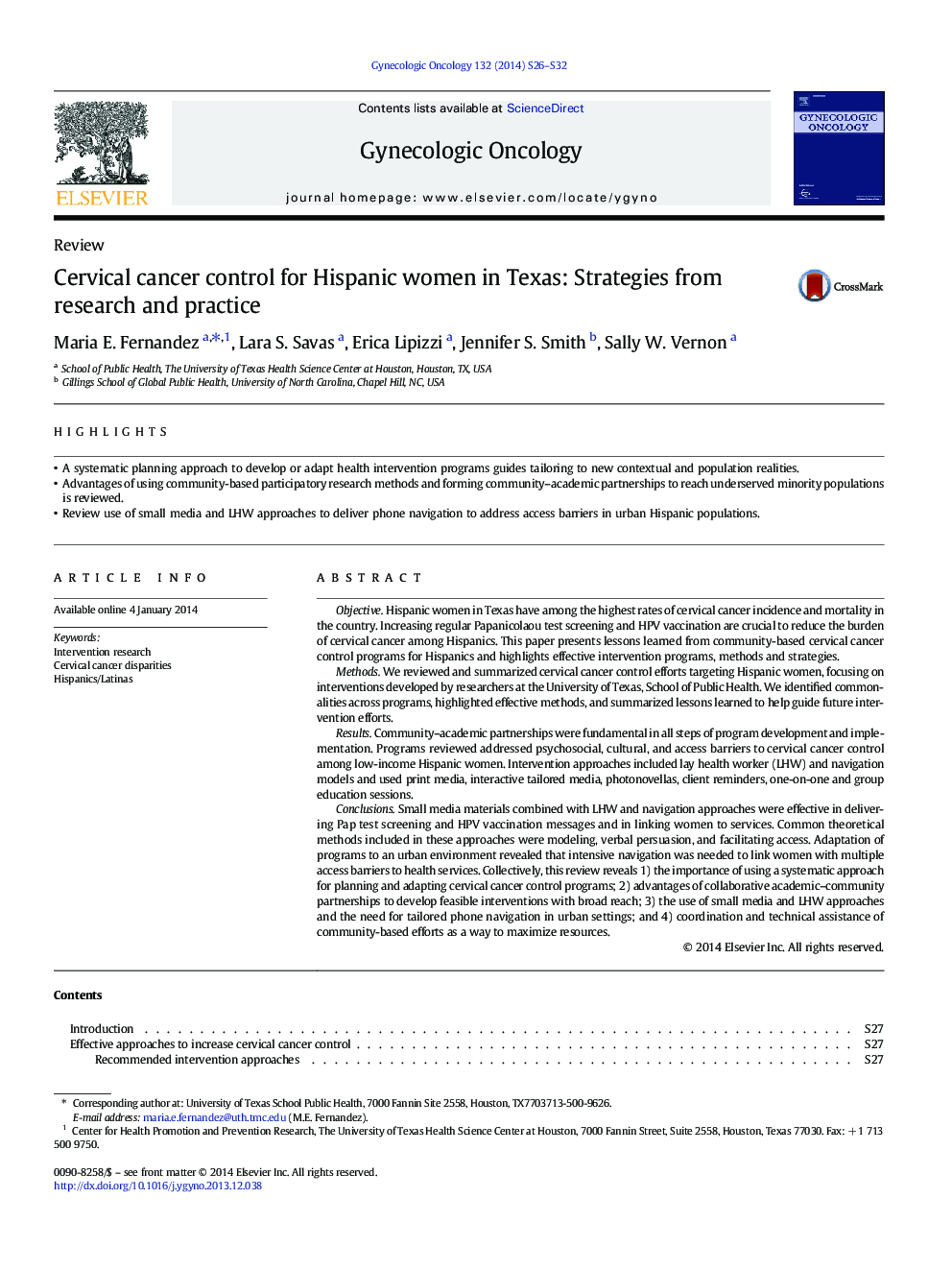| Article ID | Journal | Published Year | Pages | File Type |
|---|---|---|---|---|
| 3945686 | Gynecologic Oncology | 2014 | 7 Pages |
•A systematic planning approach to develop or adapt health intervention programs guides tailoring to new contextual and population realities.•Advantages of using community-based participatory research methods and forming community–academic partnerships to reach underserved minority populations is reviewed.•Review use of small media and LHW approaches to deliver phone navigation to address access barriers in urban Hispanic populations.
ObjectiveHispanic women in Texas have among the highest rates of cervical cancer incidence and mortality in the country. Increasing regular Papanicolaou test screening and HPV vaccination are crucial to reduce the burden of cervical cancer among Hispanics. This paper presents lessons learned from community-based cervical cancer control programs for Hispanics and highlights effective intervention programs, methods and strategies.MethodsWe reviewed and summarized cervical cancer control efforts targeting Hispanic women, focusing on interventions developed by researchers at the University of Texas, School of Public Health. We identified commonalities across programs, highlighted effective methods, and summarized lessons learned to help guide future intervention efforts.ResultsCommunity–academic partnerships were fundamental in all steps of program development and implementation. Programs reviewed addressed psychosocial, cultural, and access barriers to cervical cancer control among low-income Hispanic women. Intervention approaches included lay health worker (LHW) and navigation models and used print media, interactive tailored media, photonovellas, client reminders, one-on-one and group education sessions.ConclusionsSmall media materials combined with LHW and navigation approaches were effective in delivering Pap test screening and HPV vaccination messages and in linking women to services. Common theoretical methods included in these approaches were modeling, verbal persuasion, and facilitating access. Adaptation of programs to an urban environment revealed that intensive navigation was needed to link women with multiple access barriers to health services. Collectively, this review reveals 1) the importance of using a systematic approach for planning and adapting cervical cancer control programs; 2) advantages of collaborative academic–community partnerships to develop feasible interventions with broad reach; 3) the use of small media and LHW approaches and the need for tailored phone navigation in urban settings; and 4) coordination and technical assistance of community-based efforts as a way to maximize resources.
